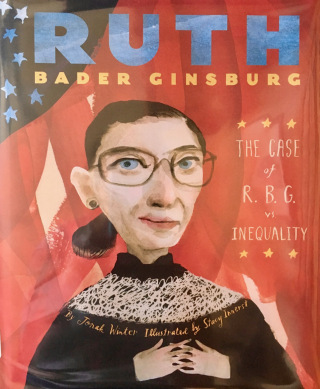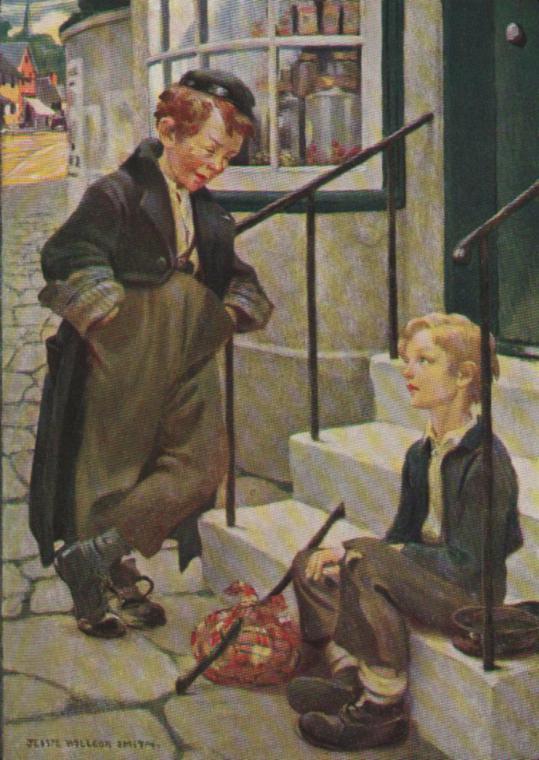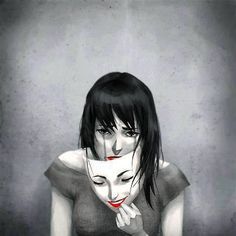Perfect Picture Book Friday places before you, Ruth Bader Ginsburg: The Case of R.B.G. vs. Inequality. Check it out, and you be the judge.
 Title: Ruth Bader Ginsburg, the Case of R.B.G. vs. Inequality
Title: Ruth Bader Ginsburg, the Case of R.B.G. vs. Inequality
Written by: Jonah Winter
Illustrated by: Stacy Innerst
Abrams, 2017
Suitable for ages: 6-9
Themes/topics: justice, supreme court, discrimination
Opening:
Ladies and gentlemen of the jury: During this trial, you will learn about a little girl who had no clue just how important she would become. You will see the unfair world she was born into—where boys were valued more than girls, where women were not encouraged to achieve and aspire. You will see evidence of that unfairness, just as she herself has seen it all her life.
Here are the facts of her case.
Brief synopsis (from barnesandnoble.com)
To become the first female Jewish Supreme Court Justice, the unsinkable Ruth Bader Ginsburg had to overcome countless injustices. Growing up in Brooklyn in the 1930s and ’40s, Ginsburg was discouraged from working by her father, who thought a woman’s place was in the home. Regardless, she went to Cornell University, where men outnumbered women four to one. There, she met her husband, Martin Ginsburg, and found her calling as a lawyer. Despite discrimination against Jews, females, and working mothers, Ginsburg went on to become Columbia Law School’s first tenured female professor, a judge for the US Court of Appeals, and finally, a Supreme Court Justice.
Structured as a court case in which the reader is presented with evidence of the injustice that Ginsburg faced, Ruth Bader Ginsburg is the true story of how one of America’s most “notorious” women bravely persevered to become the remarkable symbol of justice she is today.
Activities and Resources:
• Setting – time period: Compare the world in which Ruth grew up with that of her mother. How does her time compare to today? Interview someone in your family who lived in a different time period. What challenges did they face?
• Character: How did Ruth respond to the challenges she faced? Make a character map showing three of her traits. Provide supporting evidence from the text.
• Writing: What problem do you see in your world that you would like to change? What is your evidence? Who (audience) has the power to change it? What can be done to fix the problem? Write to persuade your audience that your issue should be addressed.
Why I like this book:
Of course, the irresistible topic of Ruth Bader Ginsburg is fascinating. But there’s more.
This isn’t the first excellent picture book on R.B.G. (see an earlier post on I Dissent: Ruth Bader Ginsburg Makes Her Mark) Authors hard at work on a topic groan in agony, head dropping to the keyboard, when they see the announcement of another book coming out on the same topic, ahead of theirs. But this book is a great example of how every author’s take on a subject is different. Focus, point of view, and structure can result in unique tellings. In this book, Winter chose to present the story as a court case. Genius!
This is one of those picture books suitable for an older audience – perfect for teachers to use for compare/contrast, character traits, and persuasive writing. It’s also a great addition to a social studies classroom. As a middle grade teacher, I found picture books such as this one user friendly with their manageable length, rich language, and engaging art.
Kirkus review
Visit author Susanna Hill’s Perfect Picture Books for a plethora of picture books listed by title and topic/theme, each with teacher/parent activities and resources.
Share this:




